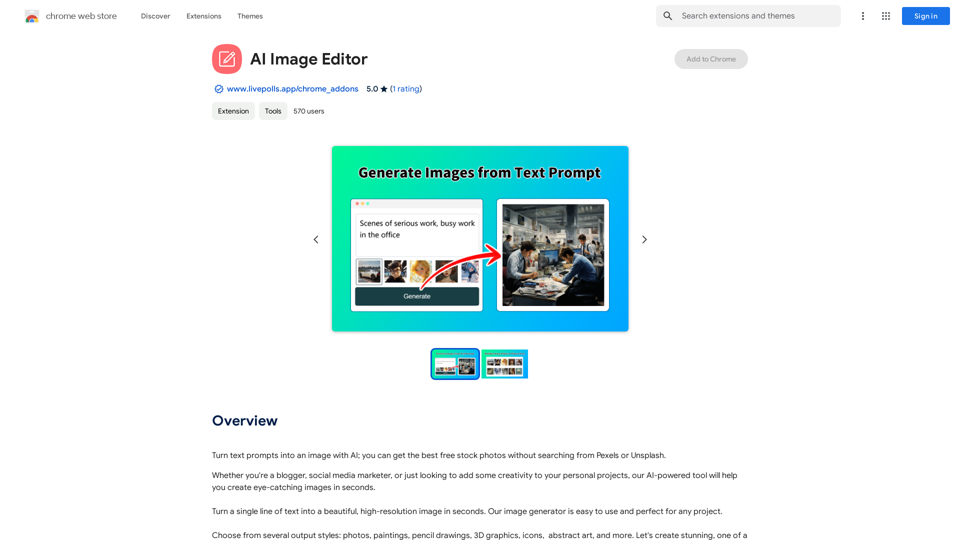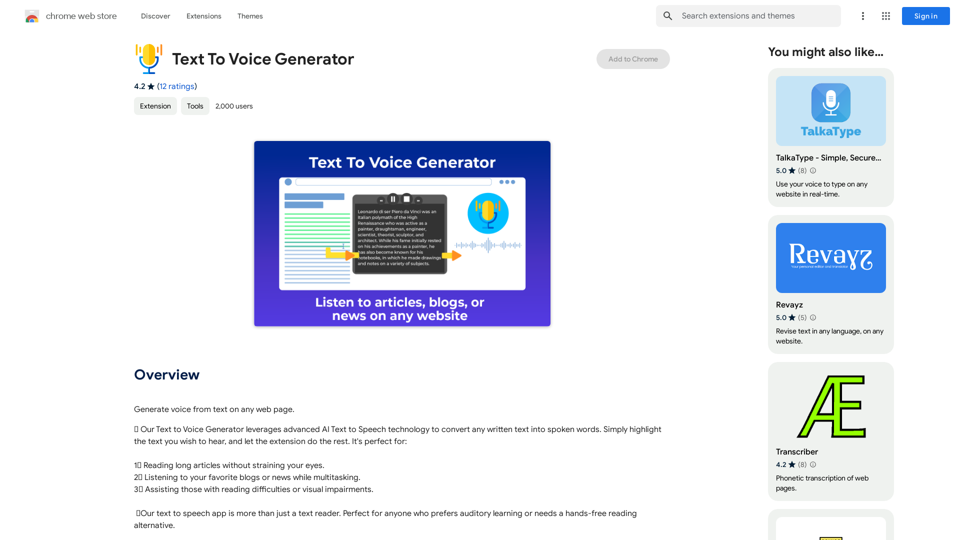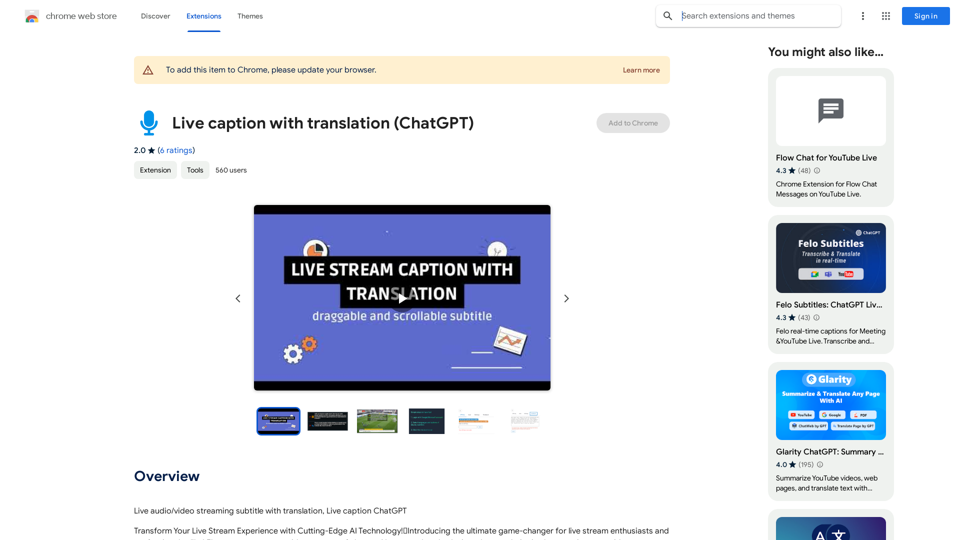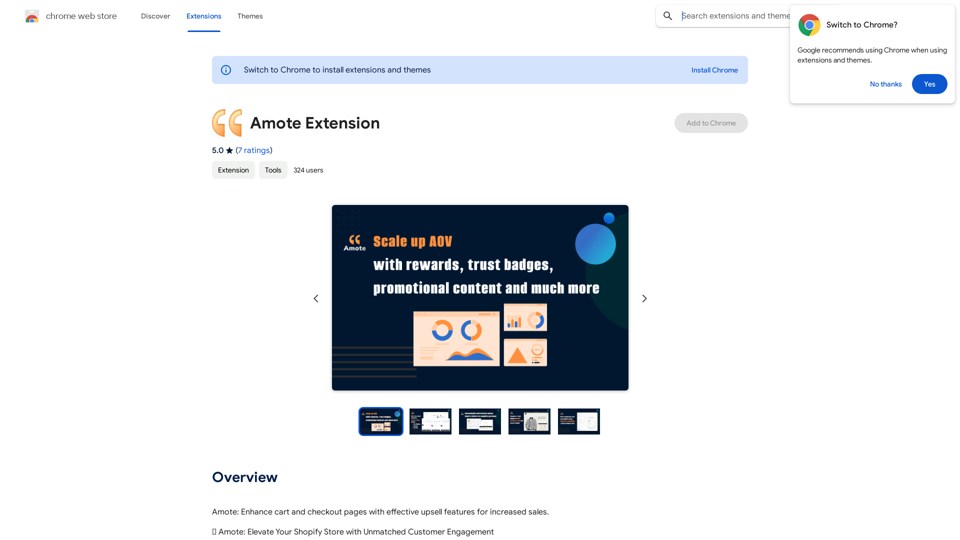AI Ease offers a free AI photo editing platform that streamlines the editing process with a variety of powerful tools. Users can enhance images, remove backgrounds, and generate new visuals effortlessly. The platform is designed for both casual users and professionals, providing high-quality results with minimal effort.
Free AI Photo Editor: Simplify Photo Editing Online - AI Ease
Simplify and automate your photo editing with AI Ease. Experience a variety of AI photo editing tools to enhance every aspect of your images for free.

Introduction
Feature
-
Diverse AI Tools
AI Ease includes a wide range of tools such as background remover, photo enhancer, watermark remover, object remover, AI headshot generator, and more, catering to various editing needs.
-
Background Removal
The background remover tool allows users to eliminate unwanted backgrounds quickly and accurately, providing a transparent background in just three seconds.
-
Watermark Removal
Users can easily remove watermarks from images with a single click, thanks to advanced detection technology that preserves the image quality.
-
Object Removal
The object remover feature enables users to erase unwanted elements from images seamlessly, utilizing AI algorithms to maintain the background integrity.
-
Photo Enhancement
AI Ease offers photo enhancement tools that can unblur images, sharpen details, and upscale photos, improving overall quality with ease.
-
AI Image Generation
Users can generate unique images from text prompts using the AI image generator, which supports over 20 art styles for creative projects.
-
Mobile Accessibility
The platform is available on both iOS and Android, allowing users to edit photos on the go.
How to Use?
- Sign up for a free account on AI Ease to access all tools.
- Start by selecting the specific tool you want to use, such as background remover or photo enhancer.
- Upload your image and follow the prompts to apply the desired edits.
- Preview the changes before downloading the final image.
- Explore various tools to find the best fit for your editing needs.
FAQ
What is AI Ease?
AI Ease is an online photo editing platform that provides a suite of AI-driven tools for enhancing and editing images efficiently and for free.
Is it free to use AI Ease's AI photo editing tools?
Yes, all tools on AI Ease are available for free, allowing users to edit images without any cost.
Is it safe to use AI Ease to edit images?
Yes, AI Ease prioritizes user data security and allows users to manage their accounts and editing history safely.
Can I use AI Ease's AI photo editor for commercial use?
Yes, users can utilize the processed or AI-generated images for commercial purposes as per AI Ease's terms of service.
Price
- Free Plan: $0/month
The price is for reference only, please refer to the latest official data for actual information.
Evaluation
- AI Ease provides a robust set of tools that significantly enhance the photo editing experience, making it accessible for users of all skill levels.
- The platform's efficiency in background removal and object editing is particularly impressive, saving users time and effort.
- While the toolset is extensive, some advanced features may require further refinement to meet professional standards.
- The user interface is intuitive, but additional tutorials or guides could enhance the user experience for beginners.
- Overall, AI Ease is a valuable resource for anyone looking to improve their photo editing capabilities without incurring costs.
Latest Traffic Insights
Monthly Visits
2.46 M
Bounce Rate
39.22%
Pages Per Visit
3.14
Time on Site(s)
136.94
Global Rank
23211
Country Rank
India 8501
Recent Visits
Traffic Sources
- Social Media:1.33%
- Paid Referrals:0.20%
- Email:0.03%
- Referrals:2.78%
- Search Engines:54.67%
- Direct:40.99%
Related Websites

Use AI to create images from text descriptions; find high-quality free stock photos without using Pexels or Unsplash.
193.90 M

The Hentai AI generator enables you to customize personalized Hentai content, while NSFW Chat provides you with a platform to interact with others and jointly discuss various topics in the adult field.
579

Text to Voice Generator ========================== A text-to-voice generator, also known as a text-to-speech (TTS) system, is a software that converts written text into a spoken voice output. This technology has been widely used in various applications, including virtual assistants, audiobooks, and language learning platforms. How it Works --------------- The process of generating voice from text involves several steps: 1. Text Analysis: The input text is analyzed to identify the language, syntax, and semantics. 2. Phonetic Transcription: The text is converted into a phonetic transcription, which represents the sounds of the spoken language. 3. Prosody Generation: The phonetic transcription is then used to generate the prosody, or rhythm and intonation, of the spoken voice. 4. Waveform Generation: The prosody and phonetic transcription are combined to generate the audio waveform, which is the final spoken voice output. Types of Text-to-Voice Generators ----------------------------------- There are two main types of text-to-voice generators: Rule-Based Systems These systems use a set of predefined rules to generate the spoken voice output. They are often limited in their ability to produce natural-sounding voices and may sound robotic. Machine Learning-Based Systems These systems use machine learning algorithms to learn from large datasets of spoken voices and generate more natural-sounding voices. They are often more advanced and can produce high-quality voice outputs. Applications of Text-to-Voice Generators ----------------------------------------- Text-to-voice generators have a wide range of applications, including: Virtual Assistants Virtual assistants, such as Siri and Alexa, use text-to-voice generators to respond to user queries. Audiobooks Text-to-voice generators can be used to create audiobooks from written texts, making it easier for people to access written content. Language Learning Language learning platforms use text-to-voice generators to provide pronunciation guidance and practice exercises for learners. Accessibility Text-to-voice generators can be used to assist people with disabilities, such as visual impairments, by providing an auditory interface to written content.
Text to Voice Generator ========================== A text-to-voice generator, also known as a text-to-speech (TTS) system, is a software that converts written text into a spoken voice output. This technology has been widely used in various applications, including virtual assistants, audiobooks, and language learning platforms. How it Works --------------- The process of generating voice from text involves several steps: 1. Text Analysis: The input text is analyzed to identify the language, syntax, and semantics. 2. Phonetic Transcription: The text is converted into a phonetic transcription, which represents the sounds of the spoken language. 3. Prosody Generation: The phonetic transcription is then used to generate the prosody, or rhythm and intonation, of the spoken voice. 4. Waveform Generation: The prosody and phonetic transcription are combined to generate the audio waveform, which is the final spoken voice output. Types of Text-to-Voice Generators ----------------------------------- There are two main types of text-to-voice generators: Rule-Based Systems These systems use a set of predefined rules to generate the spoken voice output. They are often limited in their ability to produce natural-sounding voices and may sound robotic. Machine Learning-Based Systems These systems use machine learning algorithms to learn from large datasets of spoken voices and generate more natural-sounding voices. They are often more advanced and can produce high-quality voice outputs. Applications of Text-to-Voice Generators ----------------------------------------- Text-to-voice generators have a wide range of applications, including: Virtual Assistants Virtual assistants, such as Siri and Alexa, use text-to-voice generators to respond to user queries. Audiobooks Text-to-voice generators can be used to create audiobooks from written texts, making it easier for people to access written content. Language Learning Language learning platforms use text-to-voice generators to provide pronunciation guidance and practice exercises for learners. Accessibility Text-to-voice generators can be used to assist people with disabilities, such as visual impairments, by providing an auditory interface to written content.Generate Voice from Text on Any Web Page With the advancement of technology, it is now possible to generate voice from text on any web page. This feature is particularly useful for people who prefer listening to content rather than reading it. Here's how you can do it: #Method 1: Using Browser Extension You can use a browser extension like Read Aloud or SpeakIt! to generate voice from text on any web page. These extensions are available for both Google Chrome and Mozilla Firefox browsers. #Method 2: Using Online Tools There are several online tools available that can convert text to speech. Some popular tools include NaturalReader, Voice Dream Reader, and Google Text-to-Speech. You can copy and paste the text from any web page into these tools to generate voice. #Method 3: Using Screen Reader If you are using a Windows operating system, you can use the built-in Narrator screen reader to generate voice from text on any web page. For Mac users, you can use VoiceOver. By using any of these methods, you can easily generate voice from text on any web page and enjoy a more convenient and accessible reading experience.
193.90 M

Live audio/video streaming with subtitles and translation, Live captions powered by ChatGPT
193.90 M

100% Free AI Image Generator: Text to Image Online | insMind
100% Free AI Image Generator: Text to Image Online | insMindLooking for a free AI image generator from text? Create stunning images with a simple text prompt using the most advanced AI text-to-image generator.
1.77 M

Create stunning Studio Ghibli style artwork using AI. Our text-to-image generator brings your imagination to life with the magical aesthetic of Ghibli animation.
0

Get your top AI Tools | ToolsApp AI Tools Directory
Get your top AI Tools | ToolsApp AI Tools DirectoryToolsApp AI Directory is a tool that provides a free directory of AI tools. Find your favorite AI tools with ToolsApp AI Directory. ToolsApp AI Directory aims to gather all AI tools and offer the best options for users.
0
